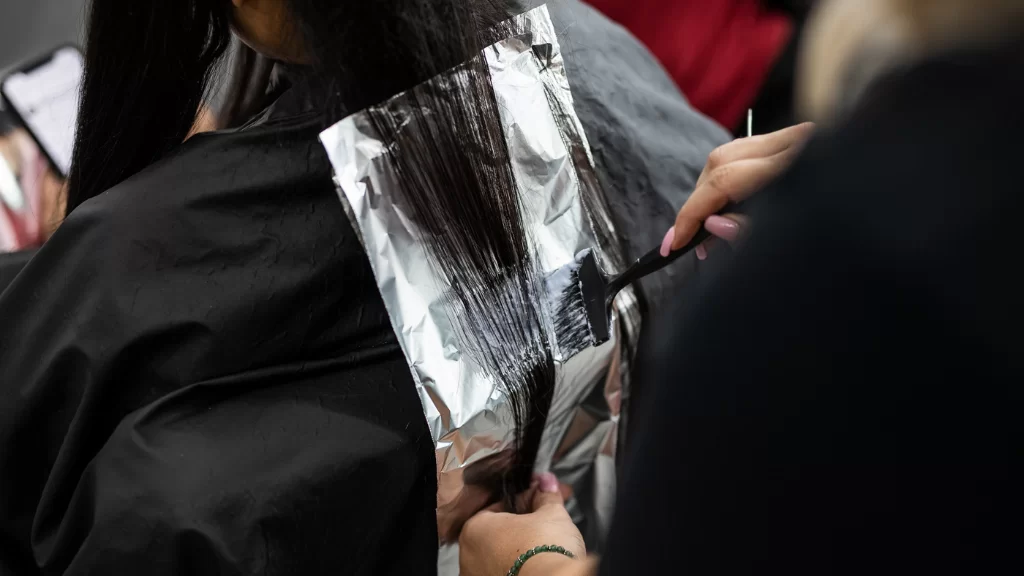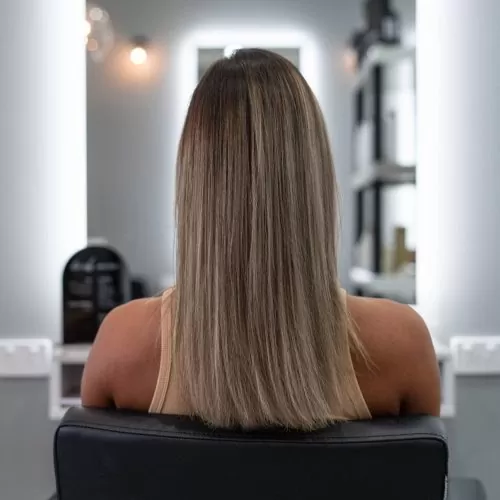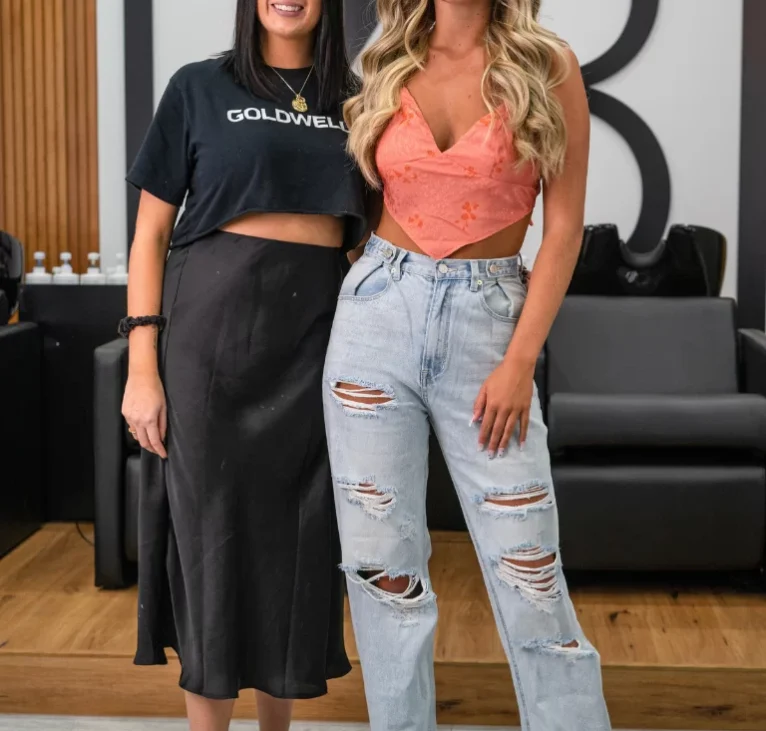What’s All The Fuss About Balayage?
If you are looking to achieve a natural and subtle makeover for your hair, Balayage is the perfect solution. As a hair lightening technique, it achieves a soft contrast between dark and light hair tones seamlessly to achieve the summery sun-kissed look that you crave.
What are Balayage highlights?
Balayage, pronounced as BAH-LEE-AGE, is a word that has origins in the French word ”balayer’ which translates to ‘sweeping.’
It refers to the free-hand painting technique used to create natural and soft highlights towards the ends of hair. The trendy technique results in giving your hair a much-coveted sun-kissed look. The ‘sweeping’ technique can be used to achieve natural highlights on all types and shades of hair, from blondes to dark coloured hair.
How are Balayage highlights done?
The first step to getting a Balayage is to consult your colourist to discuss the best options for you and to choose the colours that can help you achieve your aesthetic goal. At the initial appointment, your colourist will also evaluate your hair and ask questions about the way you usually style your hair, part your hair, or heat style it.
Once you and your colourist have decided on the Balayage colour plan, the colourist prepares the lightener. They will then section your hair and select specific strands of hair from each section. They will then paint the lightener on the selected hair strands in a light-handed way to mimic the look of naturally lightened hair in the summer. The lightener gets to work, which may take about 45 to 60 minutes.
Once your colourist decides that your hair strands have the precise lightning effect, they will rinse your hair. Your hair will also be given a protein treatment to strengthen your hair and prevent any breakages. Finally, your hair will be finished with your choice of a cut, blow dry or straightening.
Are Balayage and highlights the same?
Balayage and traditional highlights are both techniques used to lighten the hair. However, there are some key differences in these techniques.
The term ‘highlights’ denotes hair that is several shades to one shade lighter than its base colour. The traditional method of applying highlights involves using ‘foils.’ For foil highlighting, foil sheets are used to separate hair strands that need to be lightened from those that will retain their natural colour. The colourist uses an applicator brush to apply the lightener to the hair strands that are woven and separated.
The hair and its surrounding area are protected during the ‘processing time’ as the hair lightens by folding the foil. The processing time is the time needed to achieve the desired lightening, and the foil prevents the lightening agent from spreading to the surrounding hair. It also serves to trap heat that enables the lightener to achieve more effective results. Foil highlights are typically applied from the roots all the way to the end of the hair to achieve an ‘all over’ hair-lightening look.
Balayage, on the other hand, is a free-hand technique. Unlike traditional highlights that are applied from the roots, Balayage is focused more towards the ends and mid-shaft of the hair. Being a free-hand technique, Balayage creates a natural, subtle and soft gradation of lightness that is lighter at the ends of the hair and slightly deeper towards the scalp.
Which is better – Balayage or highlights?
When you are looking to get softer, subtle, and more natural highlights that last longer, Balayage is the ideal choice. The French hand-painting technique of hair lightening involves painting the colour by hand instead of using foils and old-school highlighting techniques. The free-hand method ensures your hair achieves subtle transitions and gradations between light and dark and the chosen hues. It also works well whether your original hair colour is red, brunette, blonde or dark.
Balayage application techniques may slightly vary as some colourists use cotton pieces to separate the hair while others may also use foil to divide the hair. While the application nuances can result in subtle variations in the end result, Balayage is so popular because it’s customisable. The French technique enables colourists to select the strands of hair to highlight.

Are Balayage and Ombre the same?
Ombré is a French term that means “shadow” or “shade.” In the context of hair colouring, ombré refers to the two-toned hair colouring effect where the top of the hair is typically darker while the ends of the hair are lighter. The top, dark section is usually the natural shade of hair colour, while the bottom end is lightened using a hair lightener.
An ombré effect can be achieved with any colour combinations of red, brown, blonde, or unconventional colours such as blue, pink, purple, or green. As the top section retains the original shade of the hair, frequent touch-ups may not be needed. If your hair is not naturally dark, the colourist can darken the hair’s natural colour at the roots to achieve a dramatic Ombre look.
Instead of being a technique of hair lightening like Balayage, ombre is, in fact, the ‘end look’ of the hair. The colourist will employ the ‘Balayage’ technique to give your hair the ‘ombre’ look.

Which is better: Balayage or Ombre?
Ombre is the shaded colour look where the transition from deeper tones to lighter ones is pretty short. If you are looking to make a dramatic style statement, you can ask your colourist to use creative combinations of hues to help you achieve your goal.
For a more natural and stunning result, you can opt for the Balayage technique to achieve your Ombre look. You can also read our blog on ombre for a better understanding.
Are Balayage highlights healthier?
Traditional highlights need touch-ups every six to eight weeks as the grow outs will tend to be obvious. Balayage, when performed by experienced colourists, lasts anywhere from three to six months. The grow outs with Balayage are softer as compared to highlights. Less frequent touch-ups also mean reduced exposure to bleaching agents and developers that can harm the hair in the long run.
Reputed salons use high-end salon products that help achieve a precise look while ensuring hair safety. Apart from expert application techniques, colourists at top-end salons use ammonia-free lightening creams while giving your hair specialised treatment to detox your hair, prevent breakage and strengthen highlighted hair.
Will Balayage cover grey hair?
Balayage is a perfect and smart solution to cover grey hair. Your colourist can specifically target any grey strands with the Balayage technique without the need to touch the scalp. You don’t need a separate treatment to cover grey hair when you opt for Balayage. The technique helps disguise the grey hair strands and blends them with the original hair colour.
Will Balayage work on dyed hair?
The best way to get the answer to the question ‘can Balayage be done on dyed hair?’, is to consult our colourist at our high-end salon in Cranbourne West or a similar style salon near you. The colour expert will evaluate your hair and other factors before guiding you on when you can undergo the Balayage hair lightening procedure. They may also do a ‘strand test’ to see how strong your treated hair is. Generally, experts recommend waiting for three weeks after dying your hair to get Balayage hair lightening done.
Can Balayage be done in one sitting?
If your hair is healthy and strong, you can get the Balayage done in one sitting. However, the number of sessions you need will depend on the current colour of your hair and the colour you want from Balayage. For instance, if your hair colour is black or dark and you are looking for ash blond Balayage, two to three sessions may be needed to achieve this goal.



